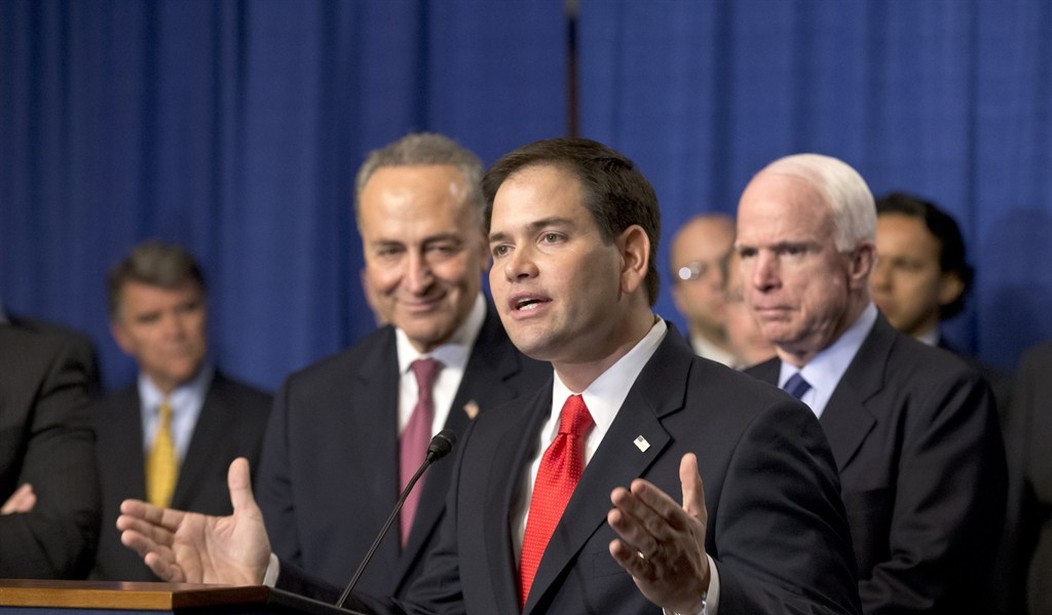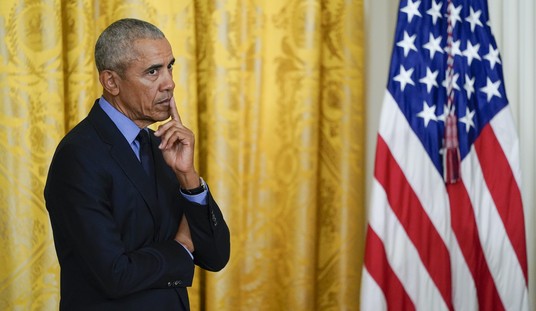One of the largest criticisms of the Senate's recently-passed immigration legislation was that it was massively overhauled by a Corker-Hoeven amendment that Senators were given just one weekend to read before the vote. The Corker-Hoeven amendment was meant as a paean to conservatives, massively upping the number of border security provisions - yet the final bill passed with just fifteen votes from Republicans.
The speed with which the Corker-Hoeven amendment was introduced and passed didn't give the Congressional Budget Office much time for analysis. Today, the CBO finally released an updated projection of how both the federal budget and border security would be affected.
All the border security measures, which is what Corker-Hoeven sold to conservatives, would have an effect on immigration flows. The initial CBO score estimated that the bill would have reduced future illegal immigration by 25%; the Corker-Hoeven legislation would reduce future illegal immigration between one-third and one-half. On the optimistic end, that's actually a fairly significant difference.
There are caveats, however, and the end numbers might not be of much comfort to conservatives:
CBO estimates that the net in flow would be reduced by between one-third and one-half compared with the projected net inflow under current law. That effect would not be immediate, as it would take several years before DHS could hire the full number of Border Patrol agents called for in the act.
Consequently, CBO estimates that the number of unauthorized residents in 2023 would be lower by about 800,000 than estimated for S. 744 as reported by the Judiciary Committee. Under the committee-approved version of S. 744, the net increase in the U.S. population would be 10.4 million people, CBO estimates. Under the Senate-approved version of S. 744, that net increase would be about 9.6 million people, after accounting for the larger decline in the number of unauthorized residents.
Recommended
One unknown variable is how much faith the CBO puts in the actual enactment of some of the border security policies. As has been pointed out, the Secretary of Homeland Security has a wide range of discretion on whether or not to actually carry out some of the border fence stipulations. Secretary Napolitano is on record as believing that the U.S. has plenty of border fence already, and President Obama has said that the border fence is "now basically complete", despite the federal government being unable to comply with a 2006 border fence law.
The top-line budget number is that there will be less deficit reduction than the CBO initially estimated. CBO estimates peg the final bill at $135 billion in deficit reduction over the first decade, which is $62 million less than the pre-Corker-Hoeven version that was initially analyzed. That's a result of more direct spending - on border security, for instance - and less revenue due to fewer illegal immigrants paying taxes.
Those numbers may be misleading. The legislation takes more than ten years to see newly-legalized immigrants to start collecting federal benefits, which is where direct spending would be most affected. And indeed, the CBO finds that is the case with the Corker-Hoeven legislation as well, though they find that the tax increases that will come with newly-legalized immigrants would help to offset the spending:
[E]ven though total direct spending would increase markedly in the second decade after enactment, the total additional revenues resulting from the act would increase substantially as well, more than offsetting the projected increase in spending. For the Senate-passed version of S. 744, CBO and JCT estimate that changes in direct spending and revenues would decrease federal budget deficits by about $685 billion (or 0.2 percent of gross domestic product) over the 2024-2033 period.
That's what this immigration bill's legacy would be: more taxes, more spending, slightly stemmed tide of illegal immigration. On the positive side, the massive influx of new Americans would help to grow the economy pretty substantially, so it might be the case that spending and revenues as a percentage of GDP would stay relatively constant.
The Corker-Hoeven amendment's border security elements would definitely make an impact, but it's unlikely to placate conservatives. The House has already said that they're going to take on immigration reform on a piecemeal basis rather than as comprehensive legislation.
I spoke with Ashe Schow of the Washington Examiner about the immigration process and battle about the road forward, here:

























Join the conversation as a VIP Member